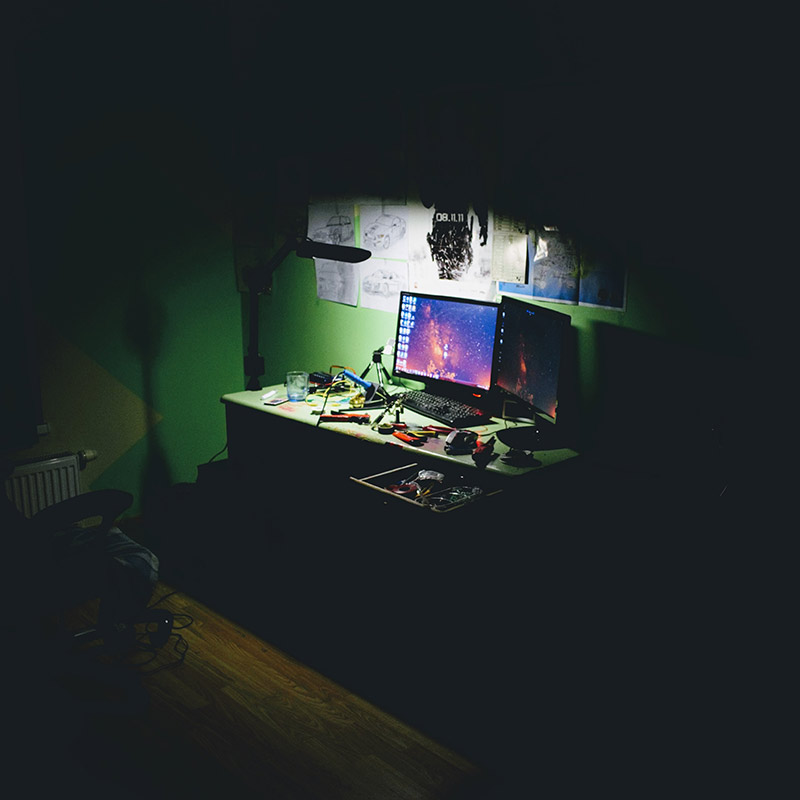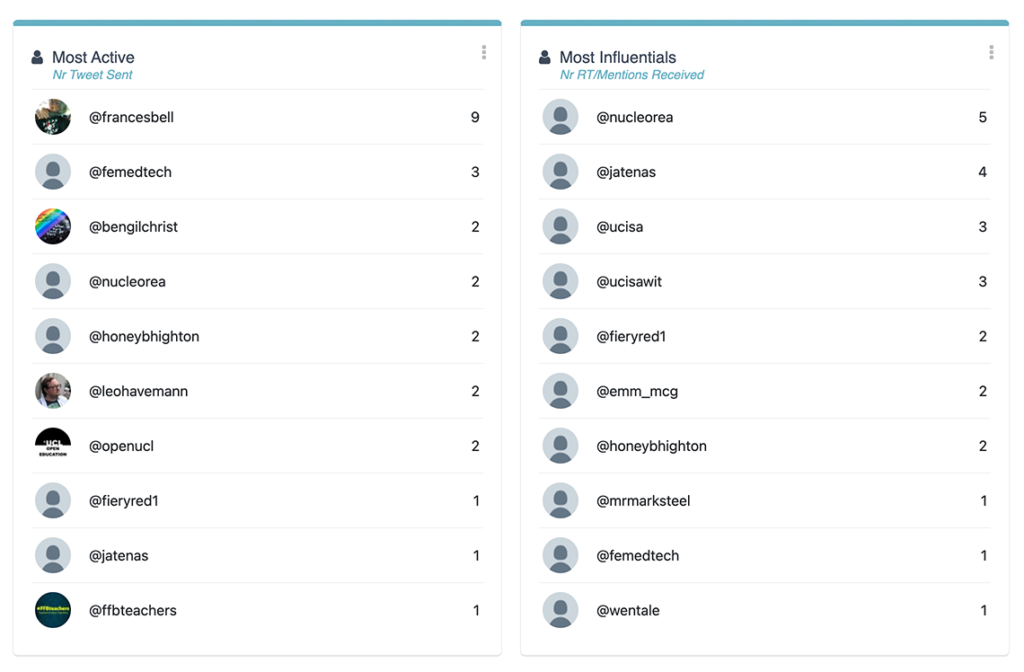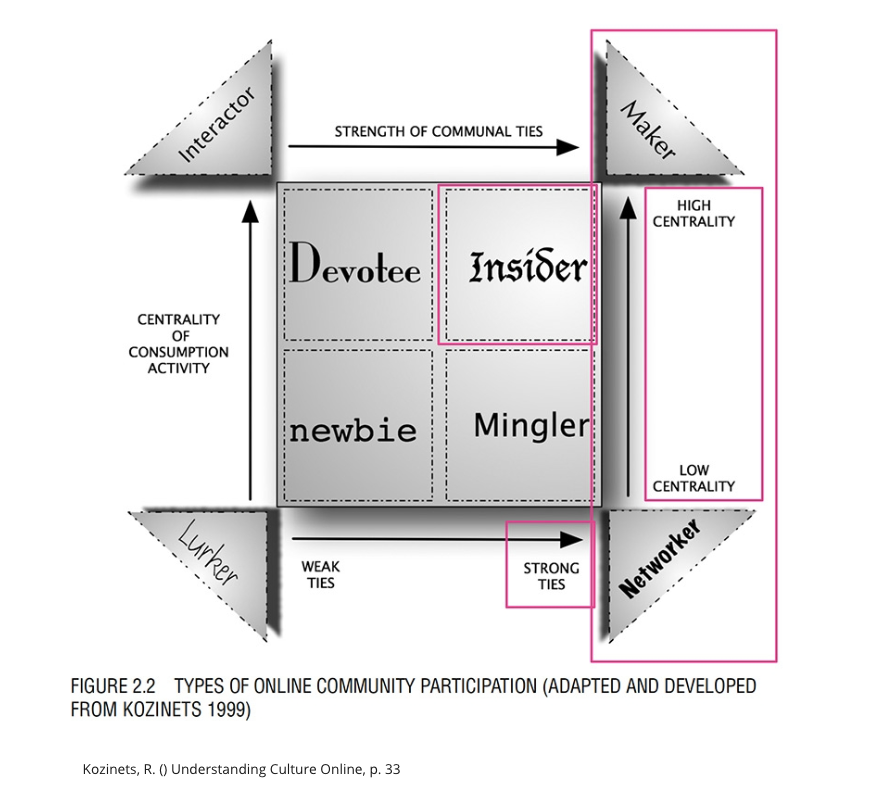
Digital artefact by Miriam Fischer CC-BY

Digital artefact by Miriam Fischer CC-BY
By designing an individually limited space on an open platform, we have visually documented our own engagement with the topic of cyberculture. Visual means that we use images to illustrate thought processes, that we use a visual language to present our points of view. We set the focal points ourselves by compiling a selection of visual material that we have either found or created ourselves. By choosing a space on the internet for it, we create a context that is part of our approach to the subject. And by choosing the objects to be exhibited in this context, they take on a new meaning. Groys’ answer to the question “What is a work of art?” is: “The work of art is an object on display.” (Groys, 2008, p.2) The curator who selects the objects is the author of an exhibition of works written by others. Thus, the collection and presentation of objects in the exhibition is itself a work of art of multiple authorship.
New meanings are created by selecting and reassembling existing objects. The objects are referenced and re-contextualised.
For this to succeed, the collective or cultural origin of the objects as well as the authorship must remain recognizable so that the new exhibition or presentation does not turn out to be plagiarism.
Stalder (2018, p. 59) sees referentiality as a fundamental method of digital culture.
»Referentiality is a feature of many processes that encompass the operations of various genres of professional and everyday culture. In its essence, it is the use of materials that are already equipped with meaning – as opposed to so-called raw material – to create new meanings.«(ibid.)
Techniques of referentiality include re-mix, re-make, sampling, homage, quotation, etc., but it can also be a reuse of a material that involves a change of genre, such as in a parody or a meme (ibid. p. 60). We intercept the circulating digital cultural objects (Hand 2008) in order to include them in our repertoire or search specifically for the appropriate circulating objects so that they support the intended meaning. This is precisely the case in the gallery: existing material is brought in, referenced in a new context of an exhibition on the theme of cyberculture.
Education draws inspiration from this practice, also in response to the infinity of sources and references that one could consult in relation to a given subject. Gourlay (2012, p. 201) writes:
»As a result of the existence of online technologies, the lecturer now selects, interprets and synthesises from an almost infinite set of online and print sources, also available to the students.«
Through the practice of curation in digital culture, new context and new meaning is created, which in turn contributes to the further development of collective cultural memory. Thus, the net-like referencing of content, objects and authors, with which ever new connections can be revealed seems to constitute the essence of cyberculture. Using the example of the lecture, Gourlay summarizes that “the contemporary lecture could now be seen as a sliver, a subset, a commentary or a guide to a massive, distributed field of text ‘out there’ in an endless digital semiotic landscape.” The lecture thus becomes a complex verbal performance: “simultaneously one-voiced and multi-voiced, single-authored and inter-textual, verbal and written.” Or to use a more cyberlike quote (Poster 2006, cited in Hand 2008, p. 19): “Texts images and sounds now travel at the speed of electrons and may be altered at any point along their course. They are as fluid as water and simultaneously present everywhere.”
With the notion of curation the referencing and compilation of relevant content is now reflected in education and evokes new intertextual practices, as we have implemented with the gallery.

References
Gourlay, L. (2012) Cyborg ontologies and the lecturer’s voice: a posthuman reading of the ‘face-to-face’. Learning, Media and Technology Vol. 37, No. 2, June 2012, 198–211.
Groys, B. (2008) Multiple Authorship. Art Power. MIT Press.
Hand, M. (2008) Hardware to everyware: Narratives of promise and threat. from Hand, Martin, Making digital cultures : access, interactivity, and authenticity, pp.15-42, Aldershot: Ashgate
Rose, G. (2016). Chapter 2: Towards a critical visual methodology In Visual Methodologies: An Introduction to Researching with Visual Materials (pp. 24-47). London: Sage
Stalder, F. (2018) The Digital Condition, Polity Press, ProQuest Ebook Central, https://ebookcentral.proquest.com/lib/ed/detail.action?docID=5226121.

References
Brown, J. S. (2008), Minds on Fire: Open Education, the Long Tail, and Learning 2.0 | EDUCAUSE

Link goes to Course Miro Board
The Forest of Code
A culture is constituted by a complex conglomeration of social, historical, societal, individual, emotional, climatic, geographical, economic and political constellations. Certainly, the list of cultural components is not complete. To describe a culture of algorithms, we need to look at these layers that make up ‘culture’. In addressing a culture of algorithms in this digital exhibition, I have chosen a simplified historical component, which for me is always included when talking about culture, and which is one element in the ‘broader social systems in which [algorithms] operate’. (Manifesto 2020, p. 107). The image of being surrounded by algorithms, of their omnipresence, is also expressed in the metaphor of the “Forest of Code” (Edwards 2015), or in the comparison of algorithms with the new collective “unconscious” (ibid.). Both are powerful images that fit well with “culture”.
For me, an approach to a culture has a timeline. When something develops, there is a period or point in time in the past when it began, a spark that was carried on by people over time through narratives, feelings, science, politics, community. History means “looking into the past” – to understand the present and to see possible futures. Culture and history therefore belong together for me. The first part of the gallery is a very short abbreviated and absolutely arbitrary selection of people, events and inventions that have led to the current algorithmic state of the digital world. The curve is populated with only a few people and phenomena that impress me. The exponentiality of the curve expresses acceleration with which the latest developments manifest themselves and increasingly determine our lives. I find it fascinating that past, present and future almost come together in the highest level of exponentiality.
This is what I associate with speculative research methods (Ross 2016), which precisely try to bring the future into the present. Lewis Carroll takes up this tension with his statement ‘It’s a poor sort of memory that only works backwards.‘ (Thru the Looking Glass), especially since the word ‘memory’ clearly points to an individual or collective past, but he doubts this clear direction in time and thus suggests the possibility of a future in memory.
Algorithmic Play
In the middle part I deal with my algorithmic play, in which I tried to book a train journey from Zurich to Edinburgh without revealing my identity. I used the TOR browser to buy a ticket from various European train travel providers, but because I did not disclose my IP address, no one wanted to sell me a ticket. It was interesting to note, however, that I was not able to access all websites in the same way. On some of them I failed after the first click, while on others I got as far as the payment process. As a consequence, my venture is doomed to failure. I can’t buy a ticket unless I allow the algorithm to get information about me.
Powerful Google
Google is a guest in my gallery several times: on the one hand as Google School, a major player swan song of traditional education by Silicon Valley players (Weller 2015), and on the other hand as the scene of the scandal of a big company that fires recalcitrant employees from the ‘digital ethics’ department of all places.
Learnification of education
Finally, my exhibition is dedicated to the emergence of a new behaviourism in education through digital platforms with their immense collections of data, through the analysis of which certain behaviours of learners can be predicted and therefore also controlled (Knox et al. 2018). For this exhibition I have taken the liberty of presenting my insights anecdotally as memes, from pieces found on the net as well as from memes I have created myself. From my point of view, memes are quite an interesting format because they cannot be read without a common cultural background of the audience. The combination of image and very short text or slogan only works if the meaning of the image can be immediately culturally located, understood and the text interpreted. The text can also generate an intentional counterpoint to the image, which allows new perspectives on what is being addressed. For this reason they offer a good – and extremely short – analogy to the term ‘culture’.
References
Bayne, S., et al. (2020) The Manifesto for Teaching Online. Cambridge (MS), London: MIT
Carroll, L. (1994): Thru the Looking Glass. London New York: Penguin Popular Classics.
Edwards, R. Software and the hidden curriculum in digital education, Pedagogy, Culture & Society, 23:2, 265-279.
Knox, J. et al. (2018)
Ross, J. (2017) Speculative method in digital education research, Learning, Media and Technology, 42:2 p. 214-229.
Weller, M. (2015) MOOCs and The Silicon Valley Narrative. Journal of Interactive Media in Education, 2015(1): 5, p. 1-7.

Link goes to Miro Course Board «Digital Culture»
For my ethnographic micro-research which I carried out as part of the IDEL module at the University of Edinburgh, I chose the #femedtech network because it deals with three thematic fields that also occupy me a lot: Feminism, education and technology.
Besides the Twitter account @femedtech, I found the “Open Space” with the URL https://femedtech.net/ and the website, where one can find more information about the network itself, current and past projects, the way of working, the rules of conduct in the network, but also stories, publications and calls.
It is interesting that the history of the network is documented, also the fact that #femedtech wants to realign itself again now. So it seems at the moment that the curation principle on Twitter is to be rethought. at the time of my investigation, Frances Bell was curator of the Twitter account. Towards the end, she announced that the curation model is to be revised.
I was able to investigate the network’s Twitter account with SocioViz.net for a week free of charge. My mini-investigation lasted from 15 to 21 February 2021. The data my investigation returned was:

We can see from the diagram that a tweet was sent at least once a day during this period, namely 16 times. A total of seven re-tweets of three tweets are registered.
From the list to the right of the timeline, we can see the hashtags that have been mentioned the most. These also give an indication of what the curator in charge focused on during this period. By far the most important was the mention of the network itself with the hashtag #femedtech, which is mentioned 28 times and must therefore appear in all tweets and retweets. The hashtag #datapraxis comes in a distant second. No conclusions can be drawn here as to how many tweets it was mentioned in and whether it only appeared in the tweets of the network itself or also in the re-tweets.

The list of most active users shows the users with the most tweets. The curator in charge, Frances Bell, has sent the most tweets. Since the other users are not curators or at least not recognizable as such, it can be assumed that all tweets are counted that contain the hashtag #femedtech or the Twitter handle @femedtech, i.e. that address their tweets directly to the network.
The list of the most influential users is headed by those who either sent the most RTs (RT = re-tweet) or who were mentioned the most.
It is interesting that the most active users are not necessarily the most influential, but that rather less active female users are high in the list of most influential users.
For example, Frances Bell, the curator and thus by far the most active user, is not included in the list of the most influential users, while @jatenas, a rather less active user on @femedtech, figures high on the list of the most influential users. Another very active person on both lists is @honeybhighton. It would now be interesting to further examine the accounts of the most influential users and to see which other networks they are in.
In general, one would have to observe the @femedtech account over a longer period of time to get reliable results on who influences the network in terms of content and activities and how @femedtech is received in the thematically neighbouring networks.
Another representation of the influence is the following:

The arrows on the display suggest directed activities, so it must be assumed that the active users mention the associated persons.
What is important for researching communities or networks are the interests or the content around which their activities revolve. In #femedtech, the following illustration shows different clusters of content that are dominant here.

The clusters are shown in different colours. Starting from “working”, two large clusters unfold: the red cluster refers to work and actors in the professional field such as “editors” or “authors” and related terms.
The purple cluster can be read as an extension or a specification of the red cluster, insofar as the professional environment is described in more detail or expanded from the perspective of the authors. Activities such as “teaching”, “identity” or “experiences” occur here. In other words, individual points of view in a professional educational environment are addressed. In further clusters, more specific aspects are mentioned that are important for the members of the #femedtech community, namely ethics, politics, gender, datasets, to name but a few, and the adjective “critical”, which also appears, reinforces the positioning as a critical network with a feminist perspective. Seen in this light, it becomes clear what Maren Deepwell meant when she referred to the members of the network as ‘activists’, a ‘hashtag community’ (Deepwell, Getting Air Podcast, Aug 23, 2019 from Mn 20:20) using the word ‘hashtag’ like ‘demonstration banner’.
With Kozinets (2018), the femedtech network can be divided into the following types and categories of communities:

For this mini-sub I have read many tweets, entries in Open Space, listened to potdasts, watched keynotes and panels, watched or listened to statements. Femedtech has a strong presence in the UK and North American edtech scene and, through its strong ties with its members, is also very active at events such as ALTc and the OER conferences. The projects that femedtech presents are also partly very ‘material’ or in the case of the quilt also first materially present, then digitally mapped. From this point of view, femedtech can be described as a network that operates in both material and virtual space and uses both spaces very actively to strengthen relationships. This is evidenced, for example, by Lou’s statement about her curation of the Twitter account while other influential members of the network were at the OER conference. She felt unable to provide adequate curation because she was not there and could perceive the same as the other members. This would be an exciting starting point for further exploration of networks and the interplay of physical and virtual social presence among members. For this reason, I place the network under ‘Insiders’. Networkers and Makers with strong ties both find themselves in the network. Influencers or ‘Insiders’ among the members enjoy high ‘centrality’.
Using Kozinet’s categorization, I would place the network under Building and Bonding. Interpersonally, strong bonds seem to be there, the network actually builds a strong pool of activists who show up at events and make connections to advance their causes.

References
Kozinets, R. V. (2010) Chapter 2: Understanding Culture Online in Netnography: doing ethnographic research online (pp. 21-40) London: Sage.
Website Social network Analysis
socioviz.net